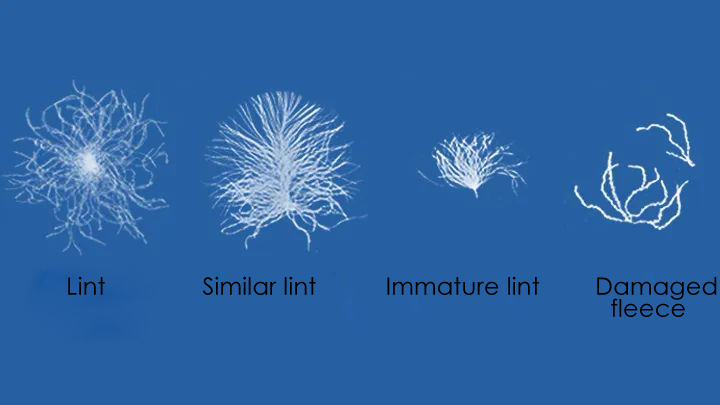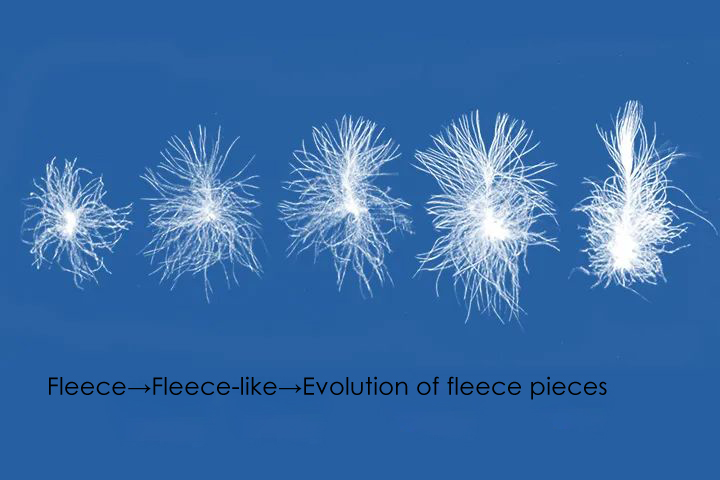 +86 152 6060 5085
+86 152 6060 5085
 +86 152 6060 5085
+86 152 6060 5085
Blog
Catalog
Latest Blog
1 Clarify the "down content" and "down content"
Down is the soft gold of the apparel industry, and the down content of down is undoubtedly an important basis for the price of down. Therefore, it is necessary to know the "down content" and to clarify the difference between it and the "down content".
The "down content" refers to the percentage of down in the feather down, while the "down content" refers to the percentage of down and down in the feather down. It can be seen that "down content" actually includes "down content" and "down content".

Among them, the lint includes dollies, immature lint, damaged lint, and similar lint, while the lint is a single lint that comes off from the root of the lint or hair piece.
As the name implies, "daugher" is a nucleus that radiates many filaments and forms a daugher-like lint; "immature lint" is an umbrella-like lint that is not fully grown; and "damaged lint" is a lint that only The "damaged lint" is a lint that emits only two or more thin filaments.
It is defined as a hairy type with stems that are thin and soft, and the tips of which are filamentous and disorganized. However, in general, it is a lint that has both characteristics of lint and hair.

For quality inspectors, the term "lint-like" is something that can easily be debated. If they are not careful, they will classify "similar lint" as hair pieces (fluffy hairs), thus causing an inexplicable decrease in the "lint content" of the test object.
2 Sorting and calculation of lint content
GB/T 14272-2021 "down clothing" down content test method, using the GB/T 10288-2016 "down feather test method". Its reference to GSB 16-2763 "down feather standard sample" for sorting, divided into two steps.
The first step is to separate the mixture of down + down silk + feather silk, as well as land bird feathers, long hair pieces, large hair pieces, impurities, waterfowl feathers and waterfowl damaged feathers, a total of seven components.
The second step is to sort out the mixture of down + down silk + feather silk in the first step in the mixing sample tank, using the four-cornered pair of splitting method to take a representative sample of 0.2g or more, and then separate out the down (including dolphin, immature down, similar down and damage down), down silk and feather silk. When sorting there are still impurities, waterfowl hair and other components, should be sorted out separately.
In GB/T 10288-2016 "down feather testing methods", the sorting of down has this provision.
"Use tweezers to carefully hold the down (doyle down, immature down, similar down and damage down), and shake off the attachment by shaking up and down gently 5 times. And use tweezers to carefully pick out the other components such as down, impurities and small pieces of hair that are entangled in the down, and do not purposely pick out the down that is entangled in the down. Artificially pulled off down filaments should be put into the down component."
After the sorting is over, the mass of the various components obtained from the two sortings are weighed out separately, and finally the down content (%) can be calculated according to the formula.
Detection of the seemingly simple, but because the down content of down, (down silk + filament) content is manually detected, and the level of testing agencies vary, so there may be testing errors.
For example, if the sample's down filament plume is relatively short, then shaking the down vary in strength, will directly affect the down content and (down + filament) content of the final results.
Especially when the sample is a lot of dust, due to the inconsistent classification standards of dust at this stage of various institutions, but also has a greater impact on the final results.
Email: hello@utstesters.com
Direct: + 86 152 6060 5085
Tel: +86-596-7686689
Web: www.utstesters.com